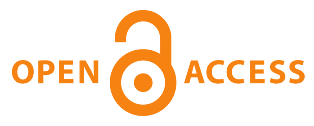Focus and Scope
DAS SEIN: Jurnal Pengabdian Hukum & Humaniora, or Jurnal Das Sein (JDS), is a peer-reviewed journal that publishes articles on the results of strengthening and service to the community. JDS focuses on current issues and problems in a region of the Republic of Indonesia in the context of national law with a contemporary Social approach to empowering communities. The topics are not limited to: Law and Community Empowerment, Law and Society, Legal Services, Legal Aid, Historical, Social and Political Studies, Anthropological and Cultural Studies, Tourism, and Economic Development.
Section Policies
Articles
Peer Review Process
Peer Review Process
Publication of articles in DAS SEIN: Jurnal Pengabdian Hukum & Humaniora is dependent solely on scientific validity and coherence as judged by our editors and/or peer reviewers, who will also assess whether the writing is comprehensible and whether the work represents a useful contribution to the field. DAS SEIN: Jurnal Pengabdian Hukum & Humaniora acknowledged the effort and suggestions made by its reviewers.
Initial Evaluation of Manuscripts
The Editor will first evaluate all manuscripts submitted. Although rare, yet it is entirely feasible for an exceptional manuscript to be accepted at this stage. Those rejected at this stage are insufficiently original, have serious scientific flaws, or are outside the aims and scope of the DAS SEIN: Jurnal Pengabdian Hukum & Humaniora. Those that meet the minimum criteria are passed on to experts for review.
Type of Peer Review
Submitted manuscripts will generally be reviewed by two to three experts who will be asked to evaluate whether the manuscript is scientifically sound and coherent, whether it duplicates the already published works, and whether or not the manuscript is sufficiently clear for publication. The method is double blind peer review.
Decision
Reviewers advise the editor, who is responsible for the final decision to accept or reject the article. The Editors will reach a decision based on these reports and, where necessary, they will consult with members of the Editorial Board. Editor’s decision is final.
Detailed information about the flow of the manuscript submission to the acceptance by the editor is shown in the following figure :

Regarding the acceptance of the manuscripts, the following are decisions provided by DAS SEIN Journal:
- Accepted. The journal will publish the paper in its original form;
- Accepted by Minor Revisions, the journal will publish the paper and asks the author to make small corrections (let authors revise with stipulated time);
- Accepted by Major Revisions, the journal will publish the paper provided the authors make the changes suggested by the reviewers and/or editors (let authors revised with stipulated time);
- Resubmit (conditional rejection), the journal is willing to reconsider the paper in another round of decision-making after the authors make major changes;
- Rejected (outright rejection), the journal will not publish the paper or reconsider it even if the authors make major revisions.
Open Access Policy
This journal provides immediate open access to its content on the principle that making research freely available to the public supports a greater global exchange of knowledge. This is an Open Access journal which means that all content is freely available without charge to the user or his/her institution. Users are allowed to read, download, copy, distribute,print, search, or link to the full texts of the articles, or use them for any other lawful purpose, without asking prior permission from the publisher or the author. This is in accordance with the BOAI definition of Open Access.

Archiving
This journal utilizes the LOCKSS system to create a distributed archiving system among participating libraries and permits those libraries to create permanent archives of the journal for purposes of preservation and restoration. More...




-2.png)





.png)



